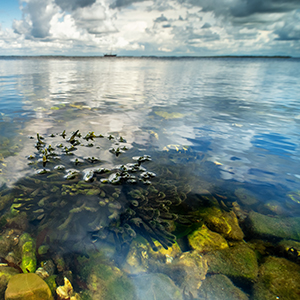Primary biodiversity data on zooplankton, macroinvertebrates, and fish from freshwater ecosystems of Uganda

Submitted: 15 December 2022
Accepted: 18 January 2023
Published: 6 February 2023
Accepted: 18 January 2023
Abstract Views: 1897
PDF: 398
HTML: 22
HTML: 22
Publisher's note
All claims expressed in this article are solely those of the authors and do not necessarily represent those of their affiliated organizations, or those of the publisher, the editors and the reviewers. Any product that may be evaluated in this article or claim that may be made by its manufacturer is not guaranteed or endorsed by the publisher.
All claims expressed in this article are solely those of the authors and do not necessarily represent those of their affiliated organizations, or those of the publisher, the editors and the reviewers. Any product that may be evaluated in this article or claim that may be made by its manufacturer is not guaranteed or endorsed by the publisher.
Similar Articles
- Laura Sartori, Sergio Canobbio, Riccardo Cabrini, Riccardo Fornaroli, Valeria Mezzanotte, Macroinvertebrate assemblages and biodiversity levels: ecological role of constructed wetlands and artificial ponds in a natural park , Journal of Limnology: Vol. 74 No. 2 (2015)
- Rafał Chmara, Józef Szmeja, Krzysztof Banaś, The relationships between structural and functional diversity within and among macrophyte communities in lakes , Journal of Limnology: Vol. 77 No. 1 (2018)
- Agnieszka Szlauer-Łukaszewska, The dynamics of seasonal ostracod density in groyne fields of the Oder River (Poland) , Journal of Limnology: Vol. 73 No. 2 (2014)
- Norman D. Yan, John Bailey, James C. McGeer, Marina M. Manca, Wendel (Bill) Keller, Martha P. Celis-Salgado, John M. Gunn, Arrive, survive and thrive: essential stages in the re-colonization and recovery of zooplankton in urban lakes in Sudbury, Canada , Journal of Limnology: Vol. 75 No. s2 (2016): Lake Orta: a new lease on life
- Anna Iglikowska, Tadeusz Namiotko, The non-marine Ostracoda of Lapland: changes over the past century , Journal of Limnology: Vol. 71 No. 2 (2012)
- Malgorzata Adamczuk, Niche separation by littoral-benthic Chydoridae (Cladocera, Crustacea) in a deep lake - potential drivers of their distribution and role in littoral-pelagic coupling , Journal of Limnology: Vol. 73 No. 3 (2014)
- Elisabetta Franchi, Antonella Carosi, Lucia Ghetti, Daniela Giannetto, Giovanni Pedicillo, Laura Pompei, Massimo Lorenzoni, Changes in the fish community of the upper Tiber River after construction of a hydro-dam , Journal of Limnology: Vol. 73 No. 2 (2014)
- Karina K. Tondato, Ibraim Fantin-Cruz, Olavo C. Pedrollo, Yzel R. Súarez, Spatial distribution of fish assemblages along environmental gradients in the temporary ponds of Northern Pantanal, Brazil , Journal of Limnology: Vol. 72 No. 1 (2013)
- Caterina Maria Antognazza, Silvia Quadroni, Isabella Vanetti, Vanessa De Santis, Giuseppe Crosa, Serena Zaccara, The increasing spread of the European barbel in the Italian large lowland rivers is threatening the native species , Journal of Limnology: Vol. 81 No. s2 (2022): Effects of water level management on lake littorals and downstream river areas
- Julien Amouret, Silvia Bertocchi, Sara Brusconi, Marco Fondi, Francesca Gherardi, Frédéric Grandjean, Lorenzo A. Chessa, Elena Tricarico, Catherine Souty-Grosset, The first record of translocated white-clawed crayfish from the Austropotamobius pallipes complex in Sardinia (Italy) , Journal of Limnology: Vol. 74 No. 3 (2015)
<< < 2 3 4 5 6 7 8 9 10 11 > >>
You may also start an advanced similarity search for this article.

 https://doi.org/10.4081/jlimnol.2023.2117
https://doi.org/10.4081/jlimnol.2023.2117






